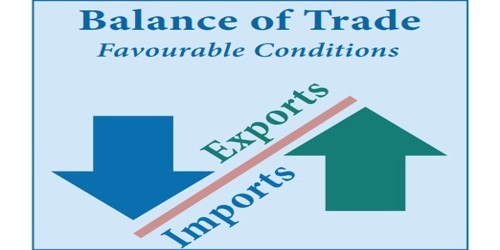
The trade balance is one of the most critical economic indicators that influences not only individual countries but also the global economy. It represents the difference between the value of a nation’s exports and imports over a particular period. Understanding the implications of trade balance can shed light on economic health, currency valuation, and international relations.
Trade balance is defined as the difference between the monetary value of a country's exports and imports of goods and services. A positive trade balance indicates a trade surplus, while a negative trade balance signifies a trade deficit.
Exports: These are goods and services sold to foreign markets. A strong export sector is typically associated with a healthy economy, as it generates revenue and supports jobs.
Imports: These are goods and services purchased from foreign countries. High levels of imports might indicate consumer demand for foreign goods, but excessive imports can also lead to trade deficits.
Goods Trade Balance: This measures the difference between exports and imports of physical goods.
Services Trade Balance: This measures the difference between exported and imported services, such as tourism, finance, and insurance.

The trade balance can provide insight into the economic health of a nation. A trade surplus generally indicates a strong economy with competitive industries, while a trade deficit may suggest reliance on foreign goods and potential economic vulnerabilities.
The trade balance significantly influences currency value. Countries with trade surpluses often see appreciation in their currency as foreign buyers need to purchase the domestic currency to pay for exports. Conversely, trade deficits may lead to depreciation of the currency, affecting purchasing power and inflation.
The trade balance directly affects job creation. A positive trade balance typically supports domestic industries, leading to job creation, while a trade deficit may result in job losses in certain sectors as companies may face competition from cheaper foreign products.
Governments monitor trade balances closely to inform economic policies and trade agreements. A persistent trade deficit may prompt policymakers to impose tariffs or negotiate trade deals to protect domestic industries. Additionally, trade balance data can influence diplomatic relations between countries.
The trade balance can impact inflation rates. A trade deficit can lead to increased demand for foreign goods, putting upward pressure on prices. In contrast, a trade surplus may help stabilize prices domestically, contributing to lower inflation rates.
The trade balance also affects foreign direct investment. Countries with trade surpluses may attract foreign investment, as investors seek to capitalize on strong export markets. On the other hand, persistent trade deficits might deter investment due to concerns about economic stability.
Trade balance data is typically sourced from national statistical agencies and international organizations. Key indicators for measuring trade balance include:
Balance of Payments: This comprehensive accounting of a country's economic transactions with the rest of the world includes the trade balance, capital flows, and financial transactions.
Customs Data: Governments collect data on imports and exports as goods cross borders, providing timely information on trade levels.
The trade balance is calculated using the following formula:
Trade Balance = Total Exports - Total Imports
This formula can be applied to both goods and services, yielding a broader understanding of a country's trade dynamics.

The trade balance is a critical component of GDP calculation. GDP is measured using the following formula:
GDP = C + I + G + (X - M)
Where C is consumer spending, I is investment, G is government spending, X is exports, and M is imports. A trade surplus contributes positively to GDP, while a trade deficit subtracts from it.
Changes in the trade balance can influence unemployment rates. Sustained trade surpluses can lead to job creation in export-oriented industries, while trade deficits may result in job losses in domestic sectors unable to compete with foreign goods.
The trade balance also interacts with inflation. A trade deficit may lead to higher consumer prices due to increased demand for imported goods. Conversely, a trade surplus can contribute to maintaining lower inflation by ensuring a steady supply of goods.
In a globalized economy, countries are interconnected, making trade balance impact more pronounced. Countries with substantial trade surpluses or deficits can influence global supply chains, investment flows, and economic stability.
Imbalances in trade can lead to tensions between countries, resulting in trade wars and the imposition of tariffs. Such actions can disrupt global trade and increase costs for consumers and businesses.
Multinational corporations often navigate trade balances by optimizing production and supply chains based on trade dynamics. Changes in trade balance can lead companies to shift operations and investments to maintain competitiveness.
Emerging markets often face unique challenges related to trade balance. Increased reliance on imports can hinder industrial growth, while strong export performance can lead to faster economic development.

The United States has experienced persistent trade deficits over the past few decades. This situation has raised concerns about dependence on foreign goods and has prompted various administrations to explore policies aimed at reducing the deficit. The implications of these deficits affect currency strength, employment in certain sectors, and political relations with trading partners.
China has maintained a trade surplus for many years, becoming known as the "world's factory." This surplus has fueled tremendous economic growth and investment, but it has also led to trade tensions with countries like the United States. Issues related to currency manipulation and trade policies have been at the forefront of diplomatic discussions.
Germany is often cited as a prime example of a country with a strong trade surplus. Its robust manufacturing sector, particularly in automobiles and machinery, has contributed to its export strength. This surplus has implications for the European Union, influencing economic policy discussions and stability within the eurozone.
Sustained trade imbalances can lead to economic distortions. While temporary trade deficits may be manageable, long-term deficits raise concerns over economic dependency and vulnerability to external shocks.
Countries experiencing significant trade deficits may need to undergo structural adjustments to enhance competitiveness. This may involve investing in innovation, improving education, and fostering a business-friendly environment.
International trade and imbalances can contribute to environmental challenges, including carbon emissions from transportation and resource depletion. Sustainable trade practices and policies are essential to address these issues.
Consumer preferences are evolving, with growing demand for sustainable and ethically sourced products. Changes in consumer attitudes can impact trade balances as countries adapt to meet these demands.
The trade balance plays a crucial role in shaping the global economy, impacting everything from currency valuation to employment rates. Understanding the significance of trade balance is essential for consumers, businesses, and policymakers alike. It informs economic strategies, facilitates international relations, and provides insights into the overall health of economies.
As global trade continues to evolve, monitoring trade balance data will remain vital in assessing the economic landscape. By adapting to changes and understanding the implications of trade balances, stakeholders can make informed decisions that contribute to sustainable growth and stability in the global economy.